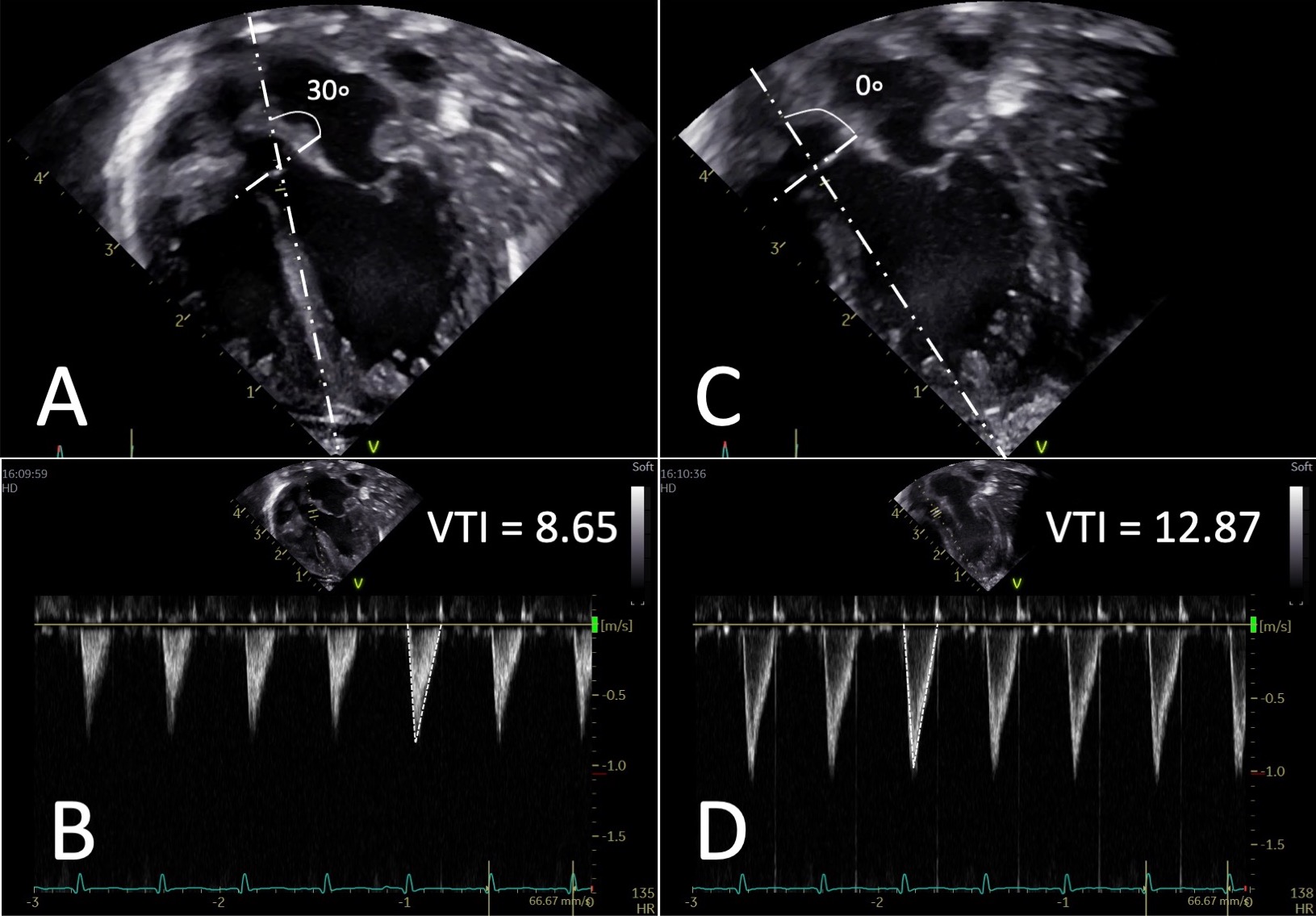Neonatal Cardiac Physiology/Pathophysiology/Pulmonary Hypertension
Neonatal Cardiac Physiology/Pathophysiology/ Pulmonary Hypertension 2
236 - Reliability and bias inherent in the use of angle correction to adjust the Doppler angle for left and right ventricular output.
Publication Number: 236.33

Regan E. Giesinger, MD FRCPC FASE (she/her/hers)
Clinical Associate Professor
University of Iowa Stead Family Children's Hospital
Iowa City, Iowa, United States
Presenting Author(s)
Background:
Targeted neonatal echocardiography (TnECHO) is standard of care in many centers to guide physiology-based individualized therapy. Left and right ventricular output estimates are used as surrogates of the adequacy of systemic and pulmonary blood flow to guide selection of cardiovascular drugs; however, a well aligned line of insonation for the Doppler is key to measurement accuracy. Post-processing angle correction tools are available on most echocardiography platforms, to adjust for mal-aligned Dopplers but their accuracy has not been evaluated.
Objective: To assess the reliability and bias of angle correction software as compared to a well aligned Doppler for the evaluation of left (LVO) and right ventricular output (RVO)
Design/Methods: A consecutive sample of 20 patients undergoing TnECHO for other reasons had paired measurements of aortic velocity time integral (VTI) and pulmonary artery VTI. For the first measurement, the cursor angle was maintained at zero degrees alignment with the flow of blood in the vessel with the sample volume bisected by the valve when closed to produce the “straight” Doppler.[Figure1,C/D] For the second, the cursor was placed at a 15–30-degree angle to the flow of blood with the sample volume at a similar location.[Figure 1,A/B] Images were taken< 30s apart. Dopplers were measured by a single expert operator. The “straight”, “uncorrected” (VTI with no adjustment for angle) and “angle corrected (AC)” (post software adjustment) VTIs were measured. Average of 3 beats was used.
Results: Patients had median weight of 848g [700, 2.45]. The mean AC used was 25.6±7.8 and 17.2±5.2 for the LV-VTI and RV-VTI respectively. The mean LVO and RVO were 163 ± 79 ml/kg/min and 145 ± 43 ml/kg/min. There was good agreement for LVO, regardless of the method used, but with a higher ICC with AC. A similar, but more marginal, pattern was noted for the RVO. [Table 1] AC lowers the VTI mean bias; however, the limits of agreement (LOA) are similar. Figure 2 shows mean bias and LOA for LV and RV outputs. Although the mean bias is small, the LOA are wide which could translate into differences in outputs of 60-80ml/kg/min. In 7/20 (35%) instances the uncorrected Doppler erroneously categorized LVO as abnormal, whereas the angle corrected version only mis-categorized the LVO as abnormal 6/20 (30%) times
Conclusion(s): The use of AC may improve mean bias and correlates well with well-aligned Dopplers with 15-30 degrees of malalignment. The LOA are wide, however, which may lead to a clinically relevant inaccuracies in output measurements. Well aligned Dopplers are recommended whenever possible.
Slide1.jpeg
